Edward VII had ‘special’ chair made for the Paris brothels. And Victoria pretended to be ‘Madame de la Comtesse de Balmoral’ on her private trips to France. It fooled no one! We look back at the Royal Family’s great cross-Channel love-affair
France may be our oldest and, in time, our most implacable enemy.
But the history of Anglo-French state visits is longer and warmer than you might expect, a warmth that Charles will no doubt feel when he arrives in Paris later this month.
Despite all the recent hostilities over Brexit, his mother was adored in France – and they will let him know it.
The first major royal rapprochement took place in August 1855, when Charles’ great-great-grandmother, Queen Victoria, was on the throne.
Queen Victoria in her carriage, right, and Emperor Napoleon III, right, during the Queen’s visit to Paris in 1855. This was the first visit to France by a British monarch in 400 years
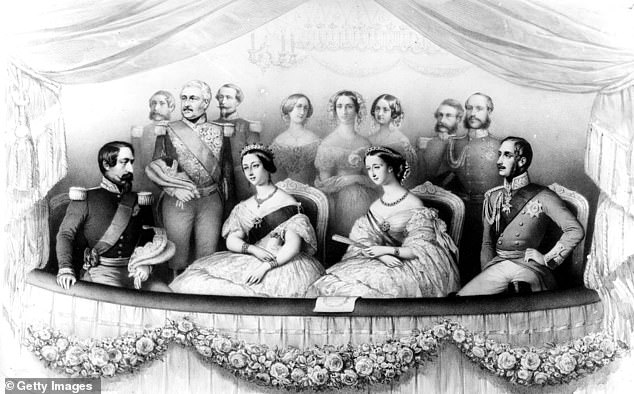
An illustration of Napoleon III, Queen Victoria, Princess Eugenie and Prince Albert at the Opera House in Paris with Napoleon III
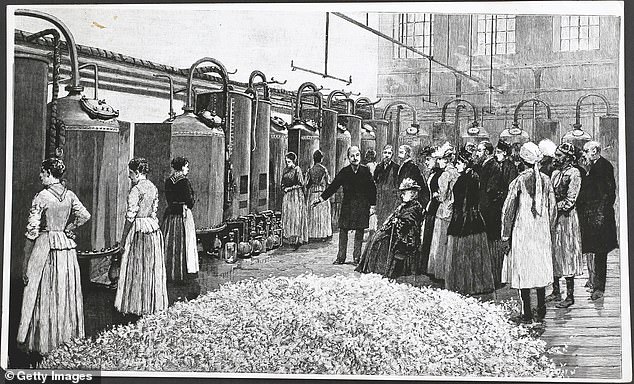
On a later visit to France, Queen Victoria (seated) was taken to a perfume factory, where the distillation process was explained to her.
She became the first British monarch in more than 400 years to visit Paris when she was the guest of Emperor Napoleon III.
The timing, in the middle of the Crimean War, marked a turnaround in the relationship between the two countries, which had fought each other at the Battle of Waterloo just forty years earlier.
In a gesture of reconciliation, Victoria even visits the grave of Napoleon Bonaparte – ‘our bitterest enemy’ as she noted in her diary, and tours the Palace of Versailles and Notre Dame.
In the last ten years of her life, Victoria traveled to France for seven Riviera holidays, under the alias ‘Madame de la Comtesse de Balmoral’, a disguise so thin that no one fooled anyone, especially since she had no fewer than 100 employed employees. and her own horses and carriages. Huge crowds gathered at the various ports and train stations along her route.
Her successor, Edward VII, was a huge Francophile and made many private visits to Paris, where he enjoyed the capital’s legendary food, cabarets and women. Known as ‘Tum-Tum’ thanks to his ever-expanding waist, when he visited high-class brothels, he used a custom-made chair made by Louis Soubrier that allowed Edward to have sex with two or more coquettes without crushing them!
Edward’s pro-French stance had its political utility since it paved the way for the Entente Cordiale of 1904, which strengthened the Anglo-French alliance a decade before the First World War. A century later, Elizabeth II celebrated his 100th birthday by visiting France and hosting a state visit to Britain by President Chirac.
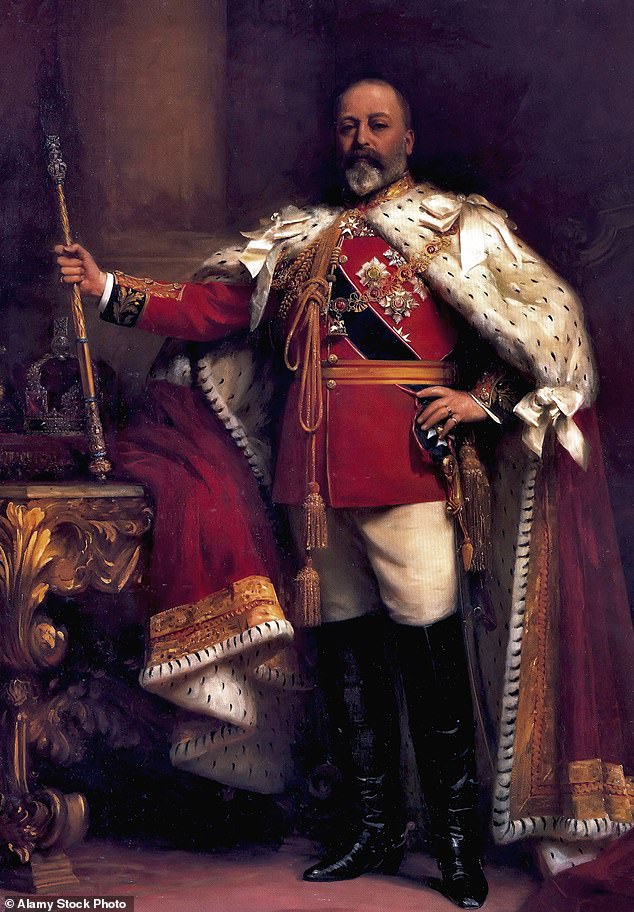
Edward VII, son of Queen Victoria, was a true Francophile. He made many private visits to Paris, where he enjoyed the food, the cabaret – and the women
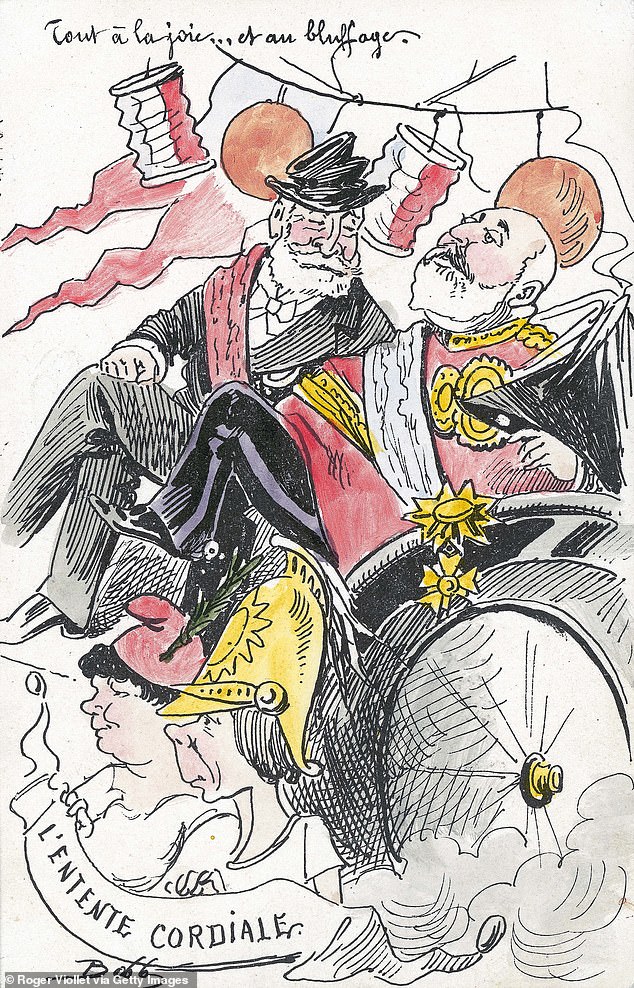
Edward VII designed the Entente Cardiale which strengthened the Anglo-French alliance ten years before the First World War
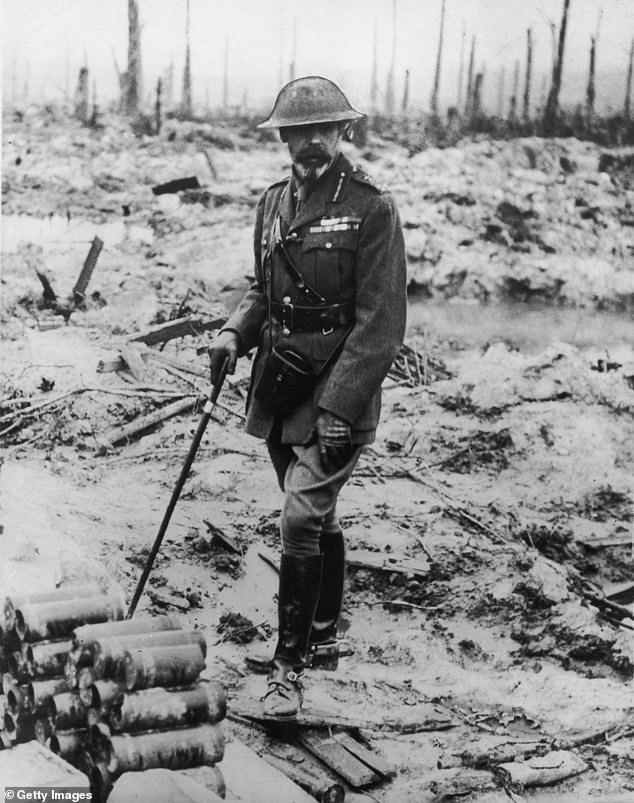
The Queen’s grandfather, George V, in military uniform looks at a battlefield in France in 1914
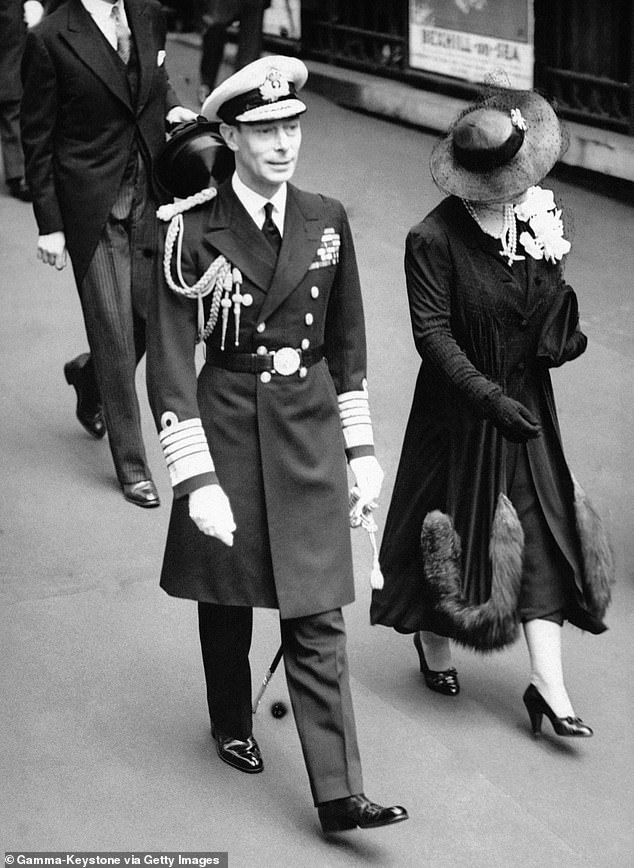
George VI and his wife Queen Elizabeth, the future Queen Mother, arrived in Paris in July 1938
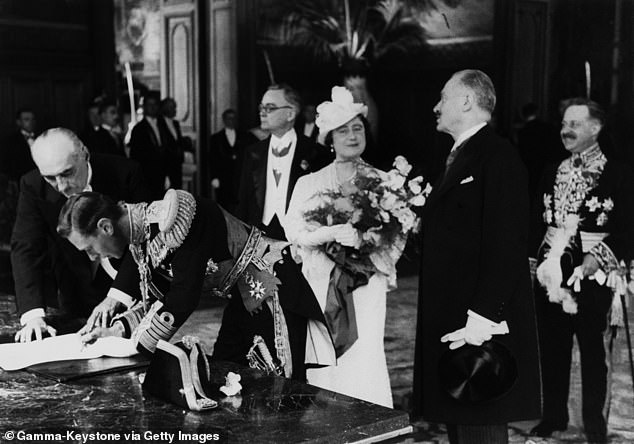
George VI and Queen Elizabeth visit a Paris town hall during the 1938 state
The late Queen’s grandfather, George V, made a state visit to France in the spring of 1914, a few months before the start of the Great War, just as her father, George VI, visited Paris in 1938 ahead of the Second World War.
George V visited the battlefields several times during the 1914–1918 conflict and was seriously injured in 1917 when cheering troops caused his horse to back away and fall on him, breaking his pelvis.
Elizabeth II made five state visits to France from 1957 to 2014, as well as numerous official visits from 1948, when she was in the early stages of her pregnancy with Charles. (During this visit she heard the legendary Edith Piaf sing ‘La Vie en Rose’ in a nightclub on Rue Pierre Charon.)
Outside the Commonwealth, this was the country she visited most, partly due to its proximity across the Channel. It helped that she was fluent in French, having been taught it by several teachers as a child. (This skill was also useful in French-speaking Quebec, where, for example, she opened the 1976 Montreal Olympics in French before repeating it in English.)
In May 1967, the horse-loving queen took a three-day private tour of some of Normandy’s best stud farms that she had long wanted to see.
One of her most memorable trips to France was her second state visit in 1972, when she visited the Duke and Duchess of Windsor at their home in the Bois de Bologne. The former Edward VIII had throat cancer and died just ten days later.

Queen Elizabeth II with Germaine Coty, wife of French President Rene Coty during her state visit to France in 1957
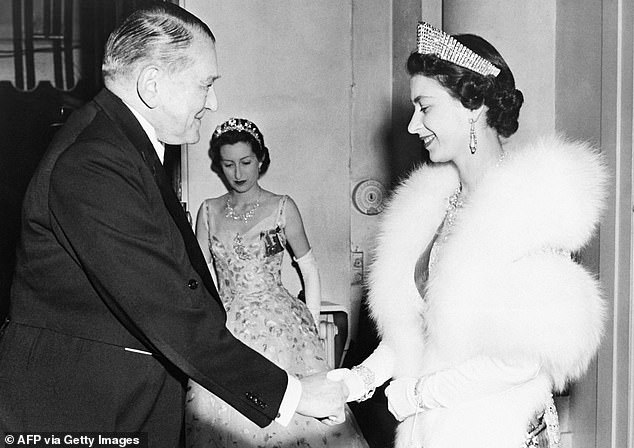
Queen Elizabeth II exudes glamor during a state visit to France in April 1957. She is greeted by President Rene Coty
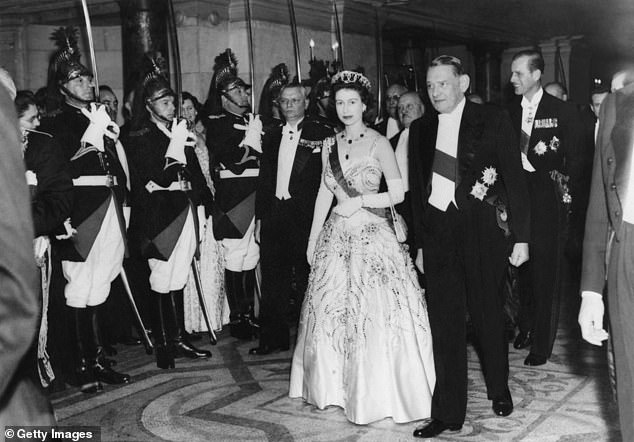
Queen Elizabeth II with Prince Philip at the Paris Opera during a visit in 1957
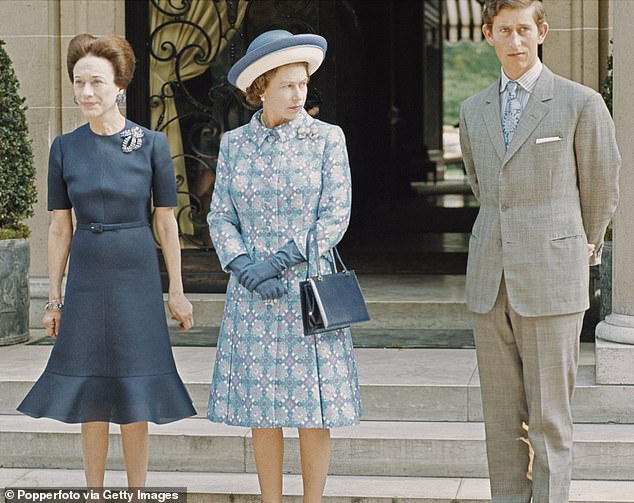
Queen Elizabeth and Charles during a private visit to her uncle, the Duke of Windsor, who was seriously ill in May 1972. The Duchess of Windsor is pictured on the left
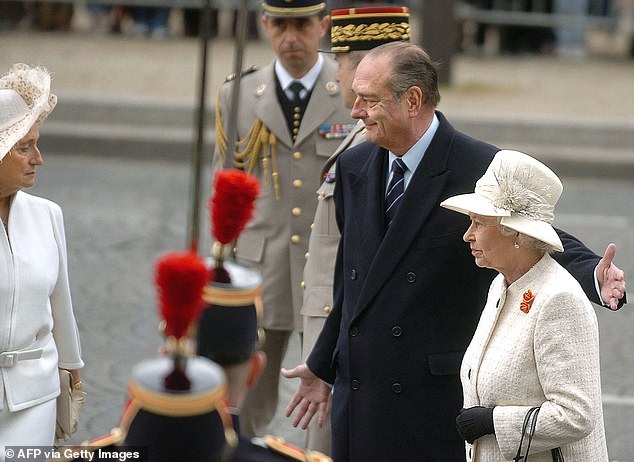
Queen Elizabeth is accompanied by Jacques Chiracon on a three-day state visit to mark the centenary of the Entente Cordiale in April 2004
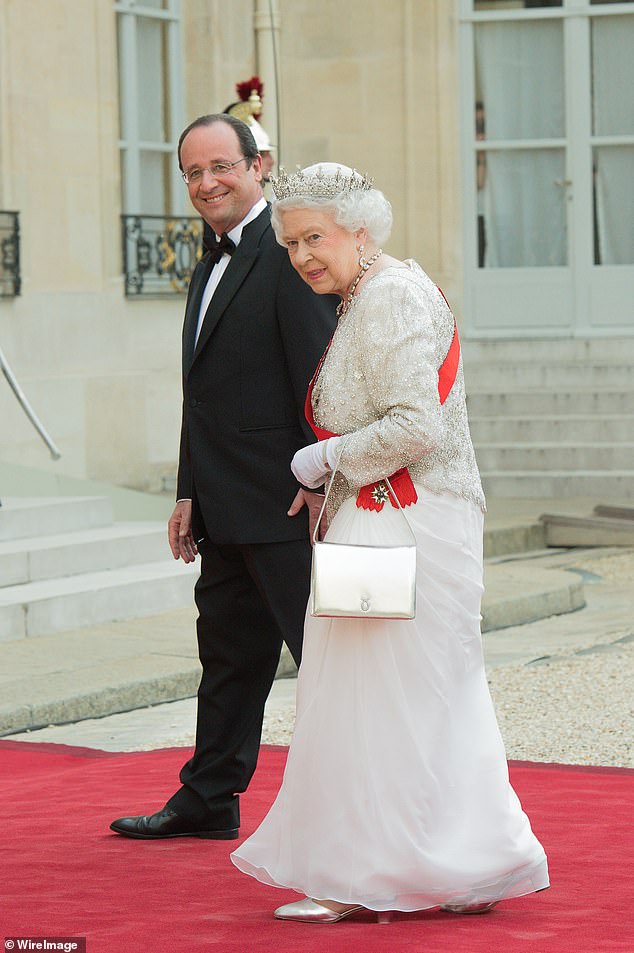
During the Queen’s last state visit in 2014, she met President Francois Hollande at the Elysee Palace for a state dinner to mark the 70th anniversary of the Normandy landings.
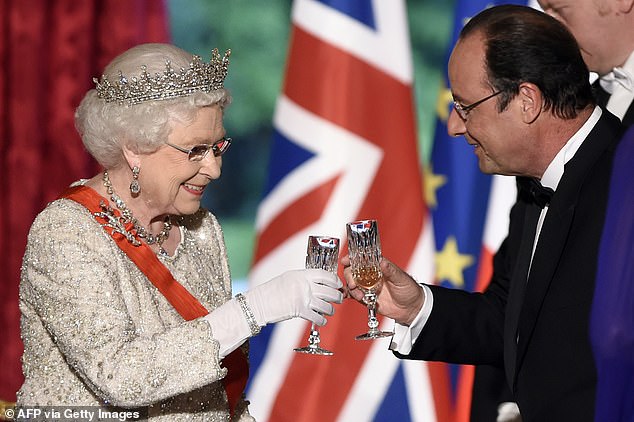
Queen Elizabeth II with French President Francois Hollande at a state dinner at the Elysee Presidential Palace in Paris, following the international D-Day commemoration ceremonies in Normandy
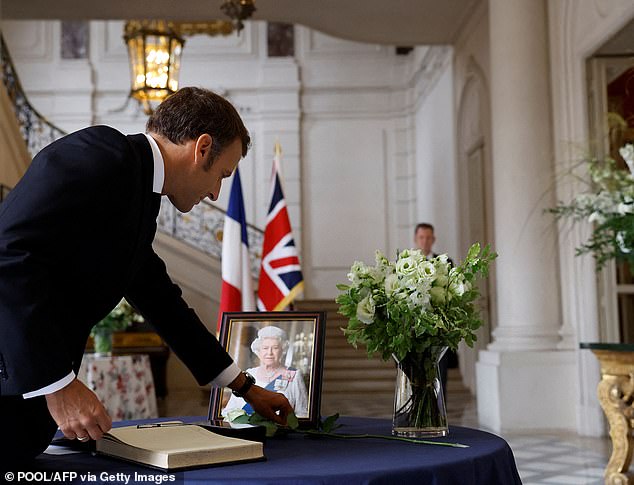
President Macron signs the book of condolence for the Queen after a moving speech in honor of Queen Elizabeth II
Her last state visit in June 2014 commemorated the 70th anniversary of the D-Day landings and she joined other heads of state, including Barack Obama. It was a moving visit, as she was the only living head of state present who had lived and served in World War II.
Elizabeth II was revered in France and after her death a year ago, President Macron paid the moving tribute: ‘To you she was your queen. · To us she was the Queen. · She will be with all of us forever.”
Such respect will certainly contribute to the success of Charles and Camilla’s visit and maintain the strong bond between the British monarchs and the French state.
- Ian Lloyd: author of The Queen: 70 Chapters in the Life of Elizabeth II
